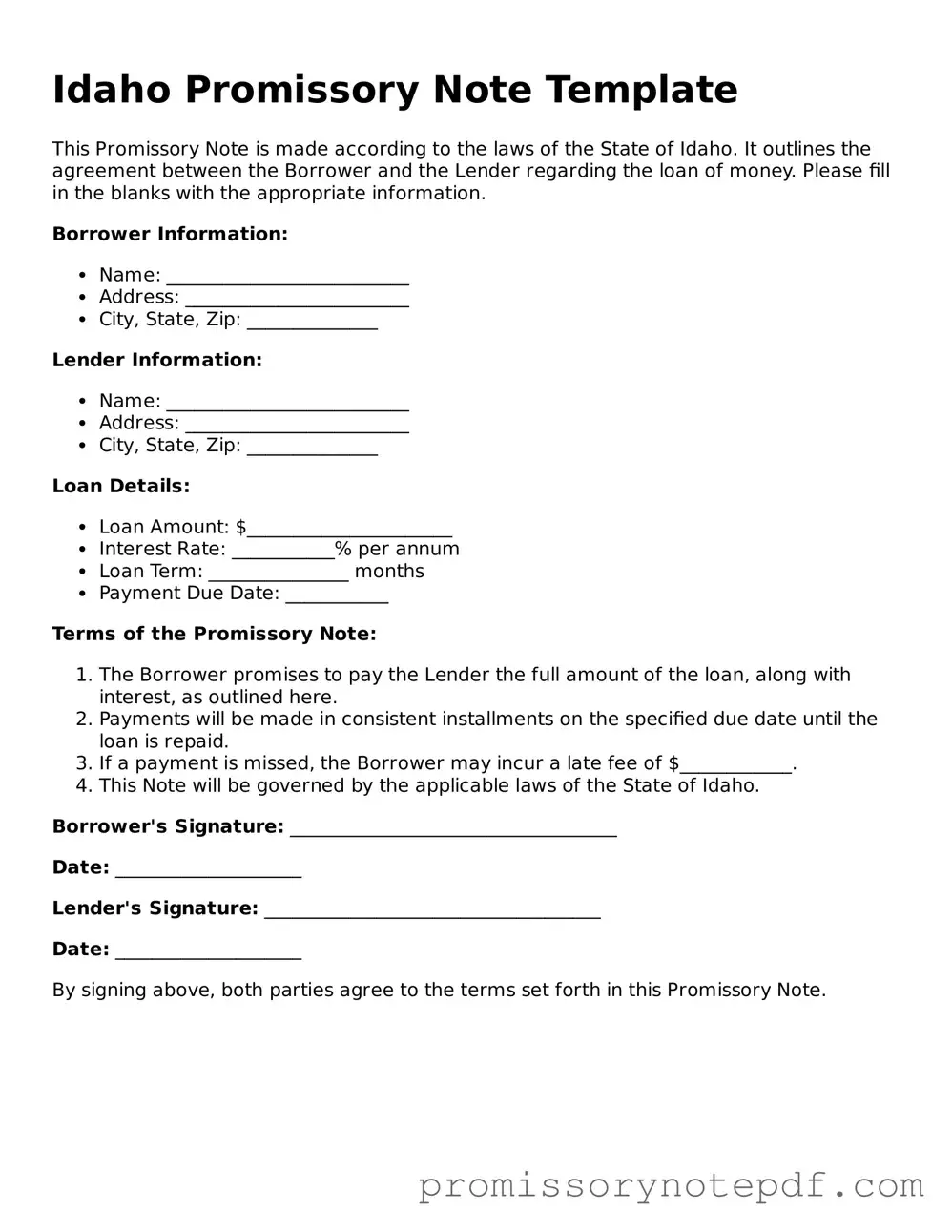The Idaho Promissory Note is similar to a Loan Agreement. Both documents outline the terms of borrowing money, including the amount borrowed, interest rate, and repayment schedule. A Loan Agreement, however, often includes more detailed clauses regarding collateral, default, and remedies, whereas a Promissory Note is typically more straightforward and focuses primarily on the borrower's promise to repay the loan. This simplicity can make a Promissory Note easier to understand and execute for individuals who may not be familiar with complex legal language.
Another document that resembles the Idaho Promissory Note is the Mortgage Agreement. While a Promissory Note signifies a promise to repay a loan, a Mortgage Agreement secures that loan with real property. In essence, the Mortgage Agreement provides the lender with a legal claim to the property if the borrower defaults on the Promissory Note. Both documents work in tandem, with the Promissory Note detailing the borrower's obligations and the Mortgage Agreement outlining the lender's rights regarding the property.
A third document similar to the Idaho Promissory Note is the Secured Note. Like a Promissory Note, a Secured Note represents a borrower's commitment to repay a loan. However, it includes additional provisions that specify collateral backing the loan. This added layer of security for the lender can make it a preferred choice in higher-risk lending situations. The presence of collateral can provide peace of mind for lenders, knowing they have recourse in the event of default.
The Idaho Promissory Note also shares similarities with a Personal Guarantee. In a Personal Guarantee, an individual agrees to be personally responsible for the debt of a business or another person. While the Promissory Note focuses on the borrower's obligation to repay, a Personal Guarantee extends that obligation to another party, often providing additional security for the lender. This can be particularly useful in business transactions where the borrower may not have sufficient assets to secure the loan independently.
A further comparable document is the Installment Agreement. Both the Installment Agreement and the Promissory Note outline a payment plan for repaying a loan. However, the Installment Agreement typically specifies the exact amounts to be paid at regular intervals, making it more structured. The Promissory Note may not detail the payment amounts as explicitly, but it still establishes the overall repayment framework. This makes the Installment Agreement a more comprehensive option for borrowers who prefer clear payment schedules.
Another document that bears resemblance to the Idaho Promissory Note is the Loan Disclosure Statement. This document provides essential information about the loan, including terms, interest rates, and fees. While the Promissory Note is a binding agreement that confirms the borrower's promise to repay, the Loan Disclosure Statement serves as a summary of the loan's key details. It is often required by law to ensure borrowers fully understand their obligations before signing the Promissory Note.
Lastly, the Idaho Promissory Note can be compared to a Forbearance Agreement. A Forbearance Agreement is used when a borrower is struggling to make payments and seeks temporary relief from their obligations. While a Promissory Note establishes the original terms of repayment, a Forbearance Agreement modifies those terms to provide the borrower with more manageable payment options. This flexibility can be crucial for individuals facing financial hardships, allowing them to maintain their commitment while navigating difficult circumstances.
